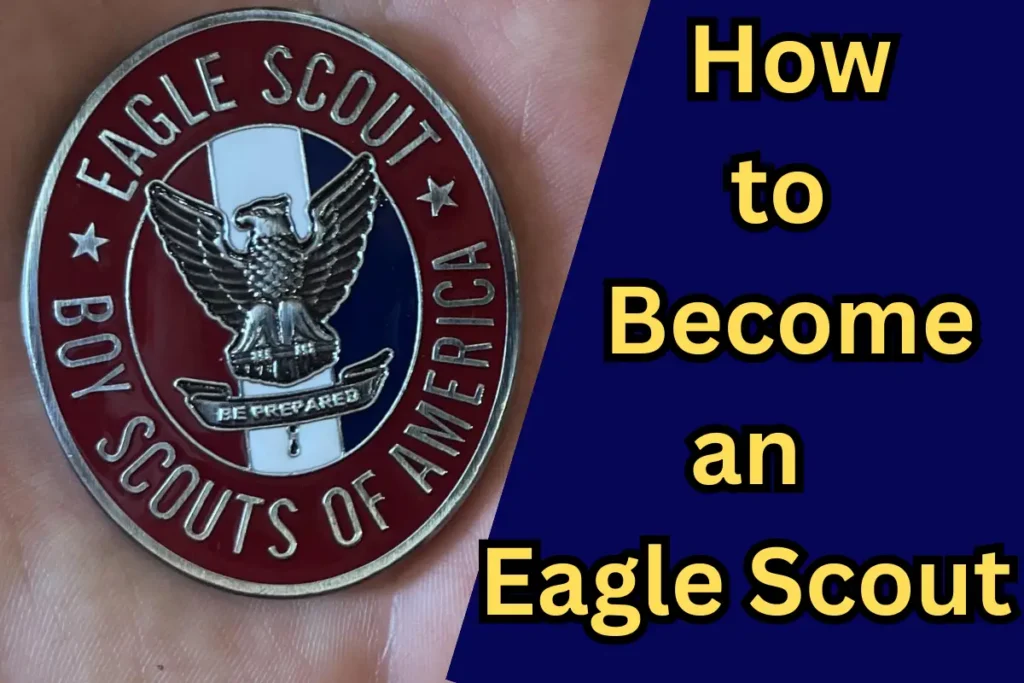
Becoming an Eagle Scout is one of the greatest milestones in a young person’s Scouting journey. If you’re working toward the Scout rank, you’ve already traveled far, earning merit badges, leading in your troop, and building character along the way. I still remember watching one of my troop mates complete his project, we were tired, sweaty, and covered in dirt, but the pride on his face as the last post went into the ground is something I’ll never forget.
In this guide, we’ll cover everything you need to know about the path to Eagle Scout, including requirements, projects, personal experiences, and advice to help you along the way. Whether you’re asking yourself “Is it hard to become one of them?” or wondering what badges you’ll need, I’ve got you covered.
Why Becoming an Eagle Scout Matters
The BSA Eagle Scout rank isn’t just another badge. It’s a recognition of years of effort, leadership, and commitment. Fewer than 10% of Scouts reach this rank, and those who do often carry the title with them for life. Colleges, employers, and communities respect the badge because it shows grit, integrity, and the ability to see tough projects through.
I’ve seen Scouts who once struggled to tie knots grow into leaders who could confidently manage a team of younger Scouts during a week-long trek. That’s what the Eagle journey builds, real-world leadership and self-confidence.
Step-by-Step: How to Become an Eagle Scout
Earn Lower Ranks First:
Before reaching Eagle Scout, you’ll need to progress through Scout, Tenderfoot, Second Class, First Class, Star, and Life ranks. Each rank develops new skills and leadership opportunities.
Complete the Required Merit Badges:
To reach the required rank, you must earn 21 merit badges in total, including 14 required ones like First Aid, Camping, Citizenship in the Community, and Emergency Preparedness. (Check out my guides on the First Aid Merit Badge, Emergency Preparedness Merit Badge, and Camping Merit Badge for tips.)
Take on Leadership Roles:
Scouts must serve in leadership positions within their troop, such as Senior Patrol Leader, Patrol Leader, or Quartermaster. These roles test your ability to guide and inspire others.
Plan and Complete an Eagle Scout Project:
The project is often the biggest challenge. It requires you to plan, organize, and lead others in a service project that benefits your community. From building benches to restoring trails, your project will become a legacy of your time in Scouting.
Scoutmaster Conference & Board of Review:
Finally, you’ll sit down with leaders in your troop and district to reflect on your journey. It’s not a test, it’s a chance to share what you’ve learned and who you’ve become.
A Personal Story From the Trail to Eagle
When my best friend worked on his Eagle project, our patrol spent an entire Saturday moving wheelbarrows of gravel to build a walking path for a local park. At first, we groaned, gravel duty wasn’t glamorous. But by the end of the day, when we stood back and saw families already using the path, we realized the power of service. That’s the heart of Scouting, working hard not just for yourself, but for others.
Tips to Make Your Scout Journey Smoother
- Start early. Don’t wait until you’re almost 18 to begin your Eagle Scout requirements. Time sneaks up quickly.
- Choose an Eagle project that excites you. You’ll be leading others, so pick something meaningful to you.
- Stay organized. Keep track of badges, positions, and requirements in a notebook or app.
- Ask for help. Your Scoutmaster, parents, and fellow Scouts are there to support you.
- Enjoy the journey. The friendships and lessons you gain are as valuable as the badge itself.
Scouting Traditions & Life Lessons
The Eagle Scout rank is more than a title. It connects you to over 2 million others who have achieved the honor since 1912. From astronauts to business leaders, BSA carry their lessons into every part of life. The discipline of preparing for a Court of Honor, the teamwork of finishing an Eagle project, and the growth from every campout shape you into someone who leads by example.
FAQs
Is it hard to become an Eagle Scout?
Yes, but in the best way. The challenge of becoming one of them teaches you resilience, leadership, and time management. With commitment and support, it’s very achievable.
Was Bill Gates an Eagle Scout?
Bill Gates was a Scout, but he did not earn the Eagle Scout rank. However, many well-known figures, including Gerald Ford and Neil Armstrong, proudly did.
What is the average age to become an Eagle Scout?
Most Scouts earn their Eagle Scout badge between ages 16 and 17, though some achieve it earlier.
What are the 3 easiest merit badges?
While it depends on your interests, many Scouts find Fingerprinting, Art, and Basketry to be among the easiest. Remember, “easy” doesn’t mean unimportant, every badge has value in the journey.
Conclusion: The Legacy of Eagle
Earning the Eagle Scout badge isn’t just about requirements, it’s about becoming the best version of yourself. From your first merit badge to leading your Eagle project, each step shapes you into a leader who can serve your community and inspire others.
If you’re on this path, keep pushing forward. You’re building more than a résumé, you’re building character, friendships, and memories that last a lifetime. And when you finally hear your name called at your Eagle Scout Court of Honor, you’ll know every bit of effort was worth it.
Don’t lose track of this Scouting resource!
📌 Pin it on Pinterest to revisit anytime
🌲 Join us on Facebook for more scouting skills & adventures!

